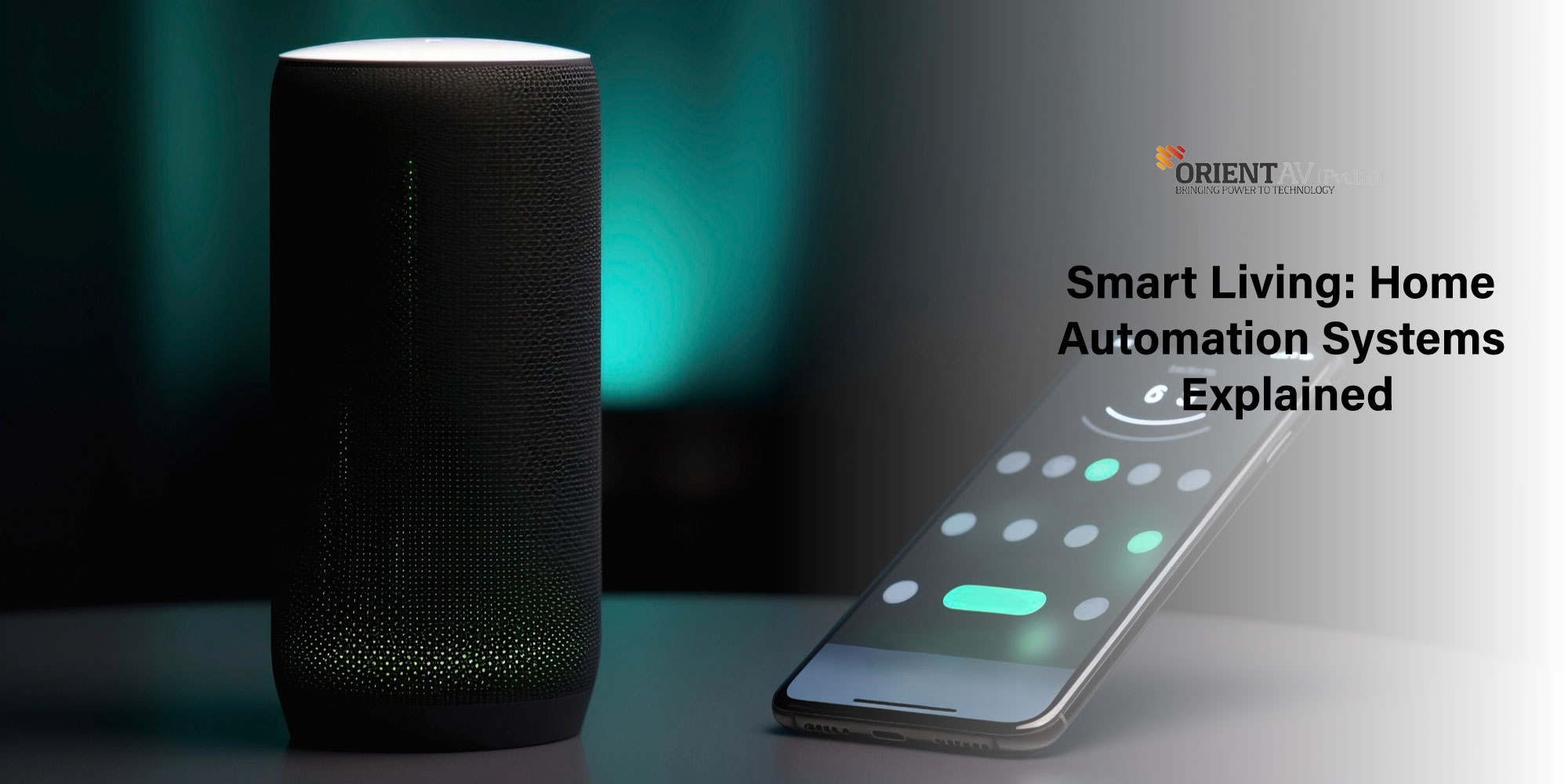Home automation systems, also known as smart home technology, revolutionise how you interact with your living space. Using your smartphone or voice commands allows you to control various aspects of your home, like lighting, heating, and security. As technology advances, these systems become more accessible and affordable for homeowners like you.
Home automation systems were initially limited to luxury homes due to their high cost and complexity. However, with advancements in technology, they have become more mainstream. From essential remote-controlled devices to sophisticated integrated systems, home automation has evolved significantly over the years.
Today, you can easily install and configure home automation systems without extensive wiring or technical expertise. With just a few simple steps, you can transform your house into a smart home, enhancing convenience and efficiency in your daily life.
Benefits of Home Automation Systems
Home automation systems offer various benefits that enhance your daily life. Firstly, they provide convenience and comfort by allowing you to control your home’s devices and appliances easily. For instance, you can adjust the thermostat or turn off lights without leaving your couch, making life more convenient.
Moreover, home automation systems promote energy efficiency by enabling you to monitor and manage your energy consumption more effectively. You can save energy and reduce utility bills by scheduling heating and cooling systems or automatically turning off unused appliances.
Additionally, these systems enhance security by offering features such as smart locks, motion sensors, and security cameras. You can receive real-time alerts and monitor your home remotely, ensuring peace of mind whether you’re at home or away.
Furthermore, home automation systems provide accessibility and remote control, allowing you to manage your home from anywhere with an internet connection. Whether on vacation or at work, you can check on your home and make adjustments as needed, ensuring that your home operates efficiently and securely at all times.

Components of Home Automation Systems
The components work together seamlessly in a home automation system to create a smart living environment. Firstly, you have smart devices like thermostats, lights, locks, and more, which are equipped with technology to communicate and respond to commands, enhancing your convenience and efficiency.
Next, there’s the hub or controller, which acts as the central command centre for your smart devices. It allows you to manage and coordinate their functions from a single interface, simplifying your control process.
Connectivity protocols such as Wi-Fi, Bluetooth, Zigbee, and Z-Wave facilitate communication between your smart devices and the hub. They ensure reliable and secure data transmission, enabling the smooth operation of your home automation system.
With the integration of these components, your home becomes more intelligent and responsive to your needs. Whether you’re controlling the thermostat from your smartphone or setting up automated lighting schedules, home automation systems offer convenience and efficiency that enhance your daily life.
Consider exploring home automation installation services and video conferencing equipment to help you set up and optimise your system. They can provide expert guidance and ensure that your smart devices are installed correctly for maximum functionality.
Moreover, as technology advances, you may explore integrating other smart technologies into your home automation system, such as video conferencing equipment, to enhance your living experience.
Installation and Setup Process
When setting up your home automation system, assessing your home’s specific needs is essential. Consider which areas of your home you want to automate and what functions you’d like your smart devices to perform. This helps you plan and prioritise your automation efforts effectively.
Once you’ve identified your needs, the next step is to choose compatible devices that align with your requirements and preferences. Look for smart devices that are compatible with your chosen hub or controller and can communicate seamlessly with each other. This ensures smooth integration and optimal performance of your home automation system.
After selecting your devices, it’s time to install them. Follow the manufacturer’s instructions carefully to install each device correctly. Depending on the type of device, installation may involve mounting, wiring, or simply plugging it in. Take your time to ensure that each device is installed securely and functions properly.
Once all your devices are installed, the final step is to configure and sync them with your hub or controller. This typically involves connecting each device to your home network and registering them with your chosen automation platform. Follow the setup wizard or instructions provided by the manufacturer to configure your devices and create automation routines tailored to your preferences.
Consider seeking assistance from home automation installation services if you encounter any challenges during the setup process. They can provide expert guidance and ensure your system is configured correctly for optimal performance. Additionally, they can offer advice on integrating other smart technologies, such as video conferencing equipment, to enhance your home automation experience further.
Challenges and Considerations
As you set up your home automation system, you may encounter various challenges and considerations to remember. One of the primary concerns is compatibility issues between different devices and platforms. Ensure all your smart devices and controllers are compatible to avoid integration problems.
Privacy and security concerns are also essential when implementing home automation systems. Safeguard your data and secure your network to prevent unauthorised access to your smart devices and sensitive information.
Moreover, consider the initial investment and cost of purchasing and installing home automation equipment. While the upfront expenses may seem daunting, remember that investing in smart technology can lead to long-term savings on energy bills and increased property value.
Additionally, don’t overlook the importance of maintenance and updates for your home automation system. Regular maintenance ensures that your devices function optimally and minimises the risk of malfunctions. Stay updated with the latest software updates and patches to enhance security and performance.
Seek advice from home automation installation services if you encounter challenges or need assistance with any aspect of your system. They can provide expert guidance and support to help you overcome obstacles and ensure a smooth and successful implementation of your home automation system.

Future Trends in Home Automation
Looking ahead, the future of home automation systems holds exciting trends that will further enhance your living experience. Firstly, there will be a significant integration of AI and machine learning into smart home devices, allowing them to learn your habits and preferences to anticipate your needs better.
Furthermore, expanding the IoT ecosystem will lead to more interconnected devices and services, enabling seamless communication and integration between various smart technologies in your home.
Moreover, there will be a growing focus on sustainability and green technologies in home automation systems, with the development of energy-efficient devices and solutions to help reduce your environmental footprint.
Personalisation and customisation trends will continue to evolve, allowing you to tailor your smart home experience to suit your unique lifestyle and preferences. This could include personalised automation routines, voice commands, and user interfaces designed specifically for you.
Conclusion
In conclusion, integrating home automation systems into your living space can significantly enhance your lifestyle. With the ability to remotely control various aspects of your home, you’ll experience newfound convenience and comfort in your daily routines. The energy-efficient features can help you save on utility bills while reducing your environmental footprint.
Furthermore, the added security measures offer peace of mind, knowing your home is protected even when you’re away. Don’t forget the potential to integrate other smart technologies like video conferencing equipment to elevate your home automation experience further.
If you’re considering implementing a home automation system, consider consulting with home automation installation services. They can provide expert guidance and assistance to ensure a seamless setup process and optimal performance of your smart devices. Embrace the future of home living with automation technology—it’s a decision you won’t regret.












